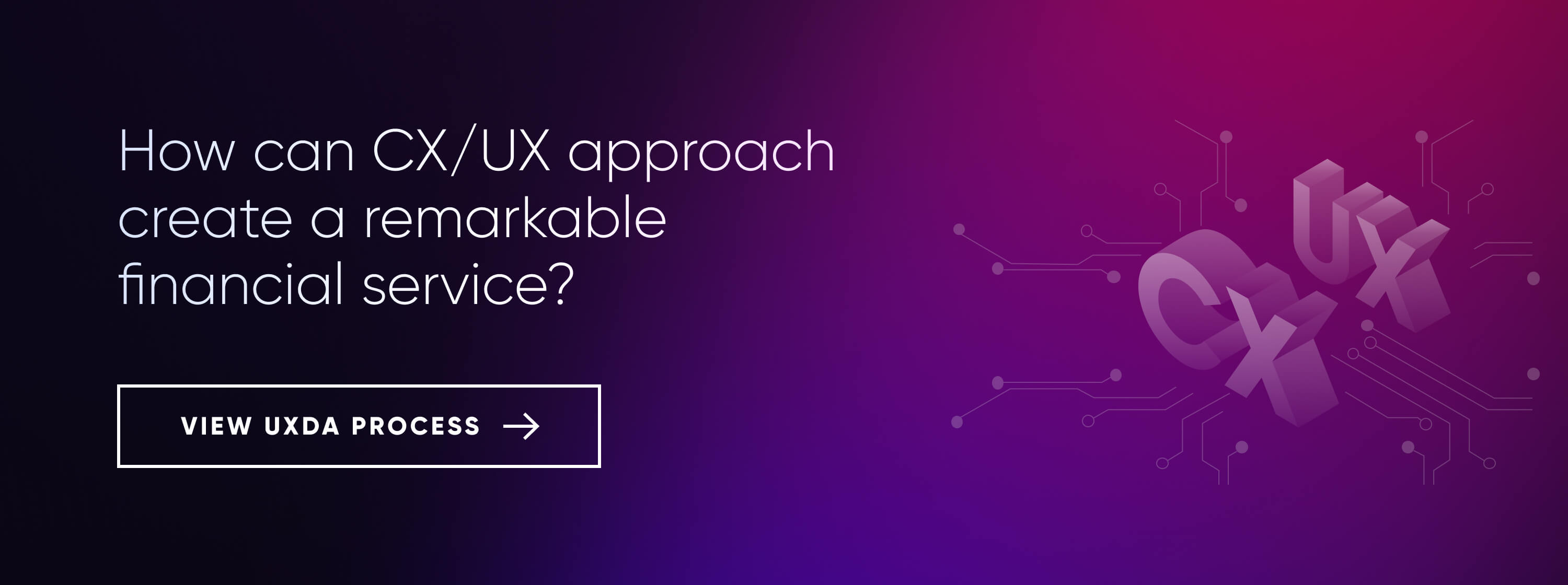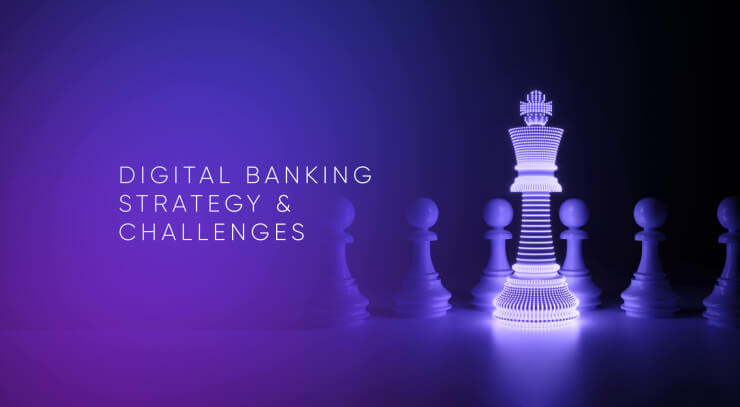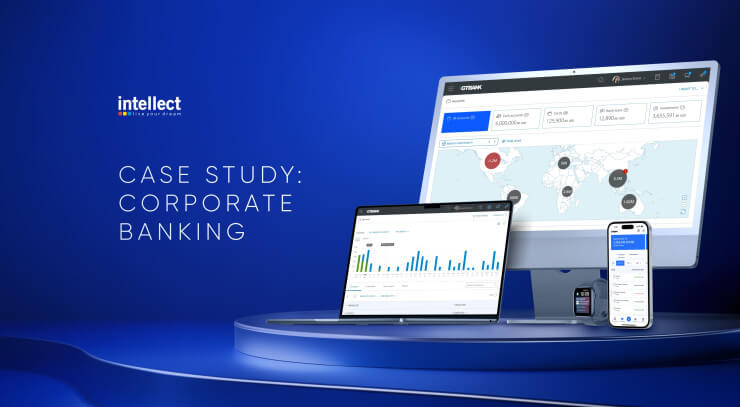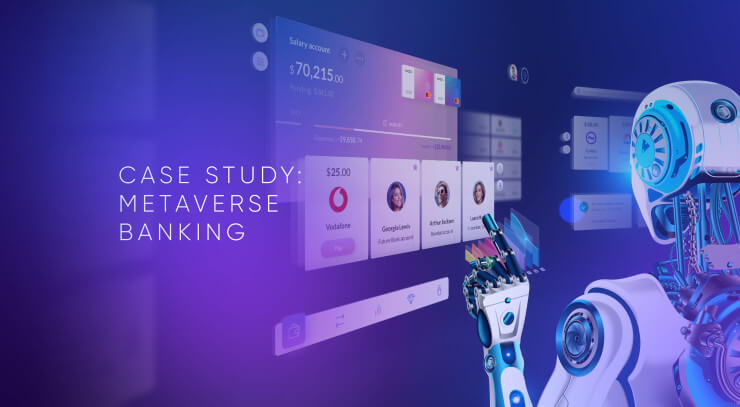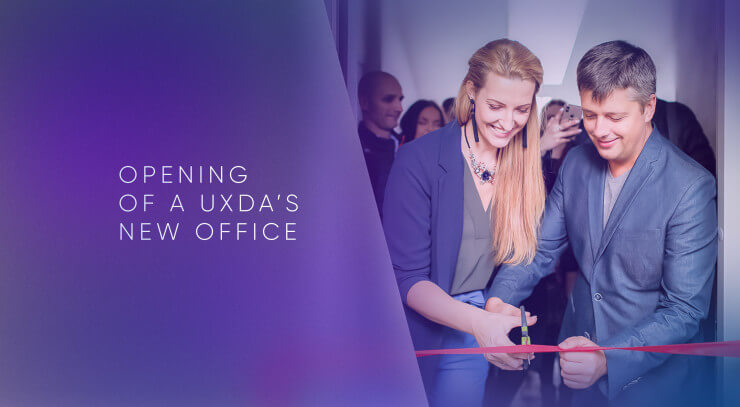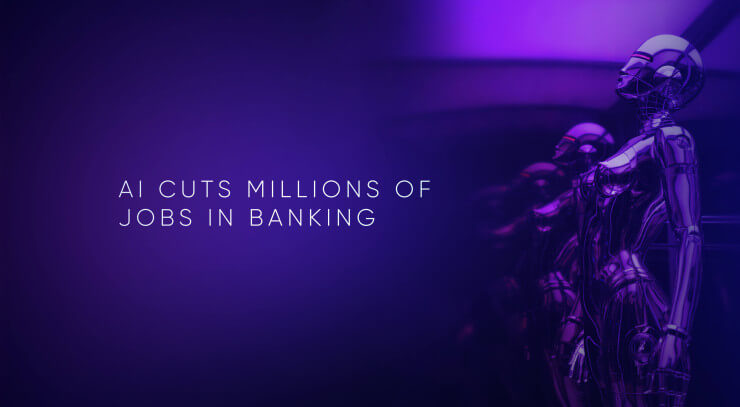This is the story of how I found an element that directly affects the efficiency of any business or person. Without this element, customers will leave and you won’t even know why. I would like to begin with a few questions. In your opinion, what does a stores and Fintech product design have in common? Is it possible that a person who comes to a store with the purpose of buying goods leaves with nothing? And what if this person get the same experience in a bank or another financial service institution?
Fintech Product Design, Yeast, Sushi Online and Confusing Customer Experience
Every day, millions of people, both offline and online, do not make their desired purchases. Unfortunately, digital financial services is no exception. Let's try to figure out how businesses lose prospective customers who are willing and ready to pay for goods and services.
The best example is the supermarket, which are, without doubt, a symbol of our consumer civilization. The largest technological chain in the history of mankind includes factories, worldwide planning and development systems, logistic facilities served by millions of people and an ultimate global network of shops offering an endless selection of products even in the furthest corners of the world.
Now imagine an ordinary person going to the store with the intention to spend some money there. Suddenly, something happens, and, for some reason, the money remains in their pockets. Nothing gets purchased, and this global machine for making money helplessly fails.
We face this challenge constantly, and I have a similar story through my personal journey to the design of digital financial services.
Many years ago, I drastically changed my career field and started to work at a digital IT agency. Back then, our team believed that the most important thing was a stunning and trendy interface that meets technical requirements. Therefore, the search for inspiration was the most important part of our digital product design process.
Everything was fine until one of our customers complained that, after redesign, sales through his site had decreased. Nobody understood how this was possible because we made his online services much more appealing with world-class design.
However, we obviously missed something. Thinking about this problem on my way back home, I went into the supermarket because my wife asked me to buy yeast for the dough. Entering the store, I automatically went to the spice aisle, but, to my surprise, I wasn’t able to find the yeast there. After a moment's thought, I continued my search at the dough shelves, but yeast also wasn't there. Perhaps it was next to the chilled dough in the refrigerated section. Again, nothing there. Asking a sales assistant also failed because knowing the exact location of one of the 20,000 goods obviously wasn't so easy.
The funny thing is that this multibillion-dollar trading industry turned out to be useless in the face of the lack of intuitive goods navigation at the shop. I felt angry about my helplessness and stupidity in the situation. I understand that the store carried yeast, but I couldn’t buy it!
Suddenly, I realized that we were facing the same issue in the IT world. A user of our digital services may be interested in purchasing a product or service. He/she might be pleased by the look of design but, perhaps, couldn't cope with obstacles on the way to the purchase. This is exactly what happened to our customer. A beautifully artistic design on the website began to disturb users instead of encouraging them to place an order.
As time went on, I uncovered a long list of similar cases. For example, one time I decided to order sushi and went to the web page of a restaurant that my friends strongly advised me to try. In order to see the ingredients I had to click twice on every dish that interested me. After 40 clicks and 20 minutes of wasted time, I had finally made my choice. Suddenly, I realized that this site did not have a basket for orders. How can I place the order? Users had to remember specific names like "ebimaki", "karaiidzumitai" and "kanagawa" and then call the restaurant and order the selected dishes in the right amount.
Well, what can I say? Maybe, offline, this restaurant is not so bad, but the owners сould discover a lot of growth opportunities by perfecting their online orders. My purchase, of course, took place that day, and I did not die from hunger, thanks to another restaurant. I'm sure everyone has experienced similar situations with digital experience, and digital banking or fintech product design is no exception.
At that moment, while standing in the store, I realized that the traditional approach of creating digital products does not work. Despite being new to the industry, I could not accept that the result of our work depended on the inspiration of the designer or the requirements of the technical system. I realized that our work should bring real benefits to the business, and this became a real challenge for my team.
* More on this topic: How Banks Are Losing Millions by Ignoring UX Design
Evolution, Real Estate and the Brain's Seeking System
We found the solution, and today we use it to design financial services worldwide. But the most surprising thing is that I had used this solution before I started to work in IT, without even realising that.
Before I started to work in the digital solutions industry, I achieved some success in retail. During my work in wholesale trading, our brand competed with companies that allocated significant funds for television and print advertising. Our budget was insufficient to use mass media advertising.
We chose the "below the line" strategy and directed all available funds to work with specialized stores, limited by our distribution range. Stickers, posters, price labels, wobblers─these were all our available merchandising weapons. Nevertheless, my efforts turned into a miracle. Our turnover increased by 60% year over year! And, after a few years, we entered the market as leaders.
The next industry in which I worked was real estate, and a similar story occurred. The competing agencies had a serious advantage. They began to work with new residential segment developers several years ahead of us. By the time we entered the market, they already had dozens of contracts with developers, hundreds of clients, numerous advertisements and even their own development projects. Nevertheless, in just two years, we created the largest real estate agency on the market for the sale of new apartment buildings. Virtually without an advertising budget, we had signed 150 projects for sale and hundreds of customers waiting in line.
I have a degree in psychology, and I can use my knowledge in order to connect all these dots together. After all, for some time, I was inclined to chalk it up to incredible luck until I found an element uniting these stories. This element directly affects the efficiency of any business and now lies in the heart of each banking or fintech product design in my UXDA company.
Let's get back to the situation in which I could not find the goods in the store. Now imagine that I came to the store, and there is only one shelf with this one product on it. The purchase would be quick and pleasant, wouldn't it? But, in real life, we have a few thousand products and options, among which you need to find the one that meets you needs.
The critical aspect is in the “search and find” activity. In general, the search activity is the basic mechanism ensuring the evolutionary survival of mankind and other living beings. At the dawn of humanity, those who knew how to search for food, shelter and a partner for procreation had the best chance of survival.
Ironically, the relevance of this principle has grown significantly since that time. The amount of information around us is increasing at warp speed, but there are still more questions than answers to be found. Throughout life, we need to look for work, customers, ideas, employees, like-minded people, the right products and many other things. There is a clear match between success and good search skills with analytical skills.
In fact, many of our achievements are due to the fact that, at the right time, we were able to find something faster and more efficiently than others. The more easily we can find effective solutions and opportunities in a modern society, the higher are our chances of success. Today, for example, anyone who has found a way to integrate AI into their work will have an advantage and higher productivity compared to others.
According to Jaak Panksepp the pioneer of Affective Neuroscience the Seeking system drives us to search our environment for information and stuff that will help us survive. It could be tasty food or a date on Tinder. "It allows animals to go out in the world and enthusiastically look for the resources needed to live."
Seeking system release dopamine arising from the ventral tegmental area (VTA). It encourages foraging, exploration, investigation, curiosity, interest and expectancy. Dopamine fires when the rat (or human) explores its environment. "I can look at the animal and tell when I am tickling its Seeking system," Panksepp explained. "Because it is exploring and sniffing."
The minute you wake up, the Seeking system is activated: where is the coffee, where is my cell phone, what is going on, and where can I find it.
Search, Priorities and Useless News
Any search process involves several stages and is essentially cyclical. A person finds options, chooses criteria for comparison and constantly narrows the field of choice, until he stops at the optimal solution (in his opinion).
Thus, the key element that we need to consider is the user's search behavior. Manufacturers of goods can create spectacular packaging design, formulate stunning descriptions of advantages and provide high-quality product, but if I cannot find the goods in the store, it's all useless. The same applies to digital financial services.
The traditional approach to the development of products and services is trying to influence the attention of users through appealing design. This is categorically not enough to initiate a customer purchase and help to solve his problem. Many managers think, that if a customer really needs your product or service, he/she will find a way to buy it. Perhaps this works in the absence of an alternative option, but nowadays there is always a way to find alternatives. And if you can’t, you may find yourself helplessly standing in the middle of the store with a question mark above your head.
So, it is important for us to understand the behaviors and needs of our users. Priorities play the most important role here. There can be many needs, but, for most people, the most important are usually just a few. And you could identify them with the help of statistics and observations.
In supermarkets, for example, it works as follows. In just about every basket of purchases, you will find milk and bread. Knowing this, the supermarket places these goods in the far opposite corners of the store, forcing buyers to move around the store and increase their likelihood of buying other products.
So, the search behavior of buyers is used to build stores as you currently see them. Knowing this, stores place the most popular and profitable goods in the main part of the store, and in the eye-level of the shelves and raise turnover. Of course, the list of goods will vary among stores, depending on the nature and needs of their customers.
In respect to the world of Fintech product design, if a visitor comes to your app to request a loan, do not tell him the latest news of your startup. Show him credit products, offer a calculator for quick evaluation of opportunities and remote application. Make his search for a solution instantaneous and extremely simple. You can find a lot of examples from innovative Fintech product designs.
As you remember, I wanted to order a meal online, and, instead of getting help, I encountered obstacles. In the end, I purchased my meal at another place, at which it took only a few clicks and five minutes of my time. Do you think the first restaurant lost just my order? No ─ it likely lost a dozen times more, my lifetime value as a customer plus referrals. And the second restaurant, accordingly, acquired it.
Understanding users’ search behavior becomes a key element in achieving success in the areas I worked prior to IT. Making a bet on the below-the-line advertising at the point of sales, instead of a mass media advertising campaign, we influenced the users directly at the moment of making the purchasing decision. Dominating in the visual space of most specialized stores, our brand attracted visitors’ attention, engaging and providing a clear answer to buyers in the process of their search. This also strengthened the positioning of the brand as a professional product, not just mass market merchandise.
In real estate, the search activity of buyers was complicated by the need to select and compare among a large number of proposals. This required communication with a huge number of RE agents and analysis of a large number of criteria. We took this burden on ourselves by offering customers one-stop real estate consulting and 150 projects to choose from, thereby greatly facilitating their search. And that was exactly what the customers needed.
Perfect User Experience, UX Errors and Business Purpose
Realizing the need for a scientific, client-oriented approach to design-effective digital services, I found that there already exists a methodology that combines psychology and technology ─ UX design. The main element of this methodology is the targeted alignment of positive experience with the technological system. In other words, this is a way to make the customers’ search process fast, pleasant and convenient with the help of digital services.
For several years my team studied over 1,000 articles and books on UX and usability. We found hundreds of case studies and conversion rate optimizations. Most importantly, we conducted our own experiments and collected data on the basis of dozens of client projects.
This led us to a discovery that changed our world. Everything fell into place. It seems that effective services are built according to a certain formula, and it precisely guides them to a high return on investment (ROI).
This formula is very simple and essentially builds on common sense. Unfortunately, it is followed by fewer than 10% of developers around the world, and that is why a lot of Internet users still do not get what they are looking for, and companies lose their funds on ineffective digital solutions.
We found that search activity is the most important but not the only element of an effective digital solution. Let's return to the supermarket scenario. Key products stand in the far and opposite corners of the store to create movement. It is important to properly take into account search behaviour with keeping the right balance among functionality, simplicity and user-centricity.
If you make it too simple, it will lack useful features. This is like Google yielding only one search result or Forbes only one key article.
On the other hand, if your solution becomes over-featured, it will lack usability. Maybe your product provides a solution for everyone, but it is too hard to understand and use.
Which store will provide the ultimate user-centricity? The one at which customers’ dreams come true, and everything is free. Obviously, this is not what a healthy business needs in order to succeed.
We have discovered an important definition of an effective digital service. It is a service that brings success to business, matches its goals and promotes growth. To satisfy user search activity, in this case, is not the goal but the tool. Thus, for the design of an effective digital solution, a balance between the interests of the user and of the business is needed.
At the same time, we must take into account that the Fintech product design is not limited to the interface; this is just the top of the iceberg. Interaction with the service occurs at different levels. At the bottom stands the core of the system. Its automated algorithms perform query processing and information exchange.
Digital product does not exist by itself; rather, it is based on a deeper level ─ organizational business processes. Therefore, to digitize the financial institution with a thoughtful and appealing interface is not enough; the development must capture all levels. After all, a user-centric service is created at all levels.
This should be taken into account when you read one of those UX recommendation lists to find out how to improve your digital service. I remember one customer who, having looked at a similar list, found all the symptoms and wanted to create the perfect service. Similar to this is a joke about a medical student who opened the encyclopedia of symptoms and realized that he needed to be treated for all diseases.
Therefore, I want to warn you right away that there is no ideal Fintech product design. In practice, the presence of errors does not exclude the effectiveness of the solution nor does it guarantee complete absence of errors. Rather, there are important factors that can influence the effectiveness of the service, such as patterns of user behavior, perception, decision-making psychology, cognitive biases, motivations and user needs.
Efficiency, Growth and Purpose
Before moving on, try to answer one important question: how would you formulate the meaning of the phrase, "effective digital service?" One of my customers answered this question this way: Effective service is the one that makes my boss happy!
I believe that what he meant was attractive service. So, try to formulate what effective fintech product design means to you.
The way you see the essence of the digital product depends upon the approach you take to create it and the criteria for evaluating the results. We posed this question to many people, and below we identify the most popular answers.
Let's imagine that, based on these options, we are trying to create a perfect financial product and not worry about the details.
The first option is interface design and appeal. In this case, we will try to create something spectacular, attractive and memorable, a feast for the eyes. But will it help our users?
The second option is functionality. Then we must create the most technologically advanced service ─ artificial intelligence worth billions of dollars that is capable of providing any functionality on demand. But will it help to develop our business with such costs?
And finally, the information, in this case, our service, should be a real encyclopedia, with tons of text written by the most intelligent people on the planet. But will it be simple and clear enough for our customers?
As you have noticed, in each case, the definition of the best fintech product design is reduced to its attributes. And here a fundamental mistake occurs. We are missing something that is beyond our attention.
This is akin to trying to answer the legendary question, "What is a human?" Body, consciousness, his deeds, role in society or the soul? Mankind is trying to find an answer throughout its existence.
But, in the case of creating an effective service, we are not willing to wait that long. Thankfully, for us, this mystery has a solution. The essence of the financial product is determined through its purpose. All services are created for something, and, if we talk about organizations, then the primary task of any service is to help the organization achieve its goals.
Of course, each organization has its own characteristics and goals and not necessarily financial ones. But there is something in common among all organizations. Any organization is in one of two states─growth or failure. Healthy organizations are always striving for survival, and therefore the main goal that all services are facing is to promote growth for their organizations.
So, in general, for the successful financial product design, we take into account the goals, features and strategy of the business, the behavior and needs of the user and the technological capabilities of the product and its features.
The business, the brand, the user and the product are the key elements on which the Fintech product design should be based. Those elements should be investigated on all levels. Based on the data obtained, the strategy of the digital service, its role in the company's business processes and connection with the user's search behavior is formulated.
To implement this digital success formula and structure this process at all three levels, we recommend using the Financial UX design methodology that is based on Design Thinking approach and UX for banking industry.
Fintech Product Design Recipe
In conclusion, let's recall the lessons I learned from my background that UXDA is now using to develop user-centered financial products:
1. Define the Criteria for the Effectiveness of a Digital Product for Your Business
Ask yourself a few important questions. Why is your business developing a digital service? What business processes will it be connected with? How will it help realize the short-term and long-term goals of your business? How will financial services technology help to grow your business? Answers to these and similar questions will help you create a list of key performance indicators (KPIs) for evaluating the effectiveness of a digital product and its requirements.
2. Identify the Features of User Search Behavior
Study your users and find out their problems and needs. Build a customer journey map. How and where do your users look for a solution to their problem? Identify their search patterns and Seeking system.
3. Identify Obstacles on a Customer Journey
Find the difficulties your potential customers face in searching for a solution to their problem. Analyze all potential scenarios. Uncover all possible pain points and determine the weight of each of them. It is important to understand the degree of influence of each obstacle of the client's behaviour. What can force them to abandon your or a similar service, and what will cause only slight discontent?
4. Identify Opportunities to Remove Barriers and Meet User Needs
Your product should, in every way, help the client in their search for a solution to the problem, and not interfere with it. Therefore, determine how your financial product can help eliminate the identified obstacles and turn pain points into “wow” points. Identify the most important user needs within the investigated problem, and design the way they are ultimately satisfied with your service according to your business model─in a fast and incredibly simple way.
5. Develop a Strategy and an Architecture for a Digital Financial Product That Balances Business Requirements, User Needs and Technological Capabilities
Do not forget to coordinate the strategy of a user-centered digital service with the interests and goals of the business. Define the goals and objectives of the business, as well as the needs and behavior of its users for each phase of the user's journey. Next, based on this, develop the best configuration of functions and the information architecture of the digital financial product.
Basically, this is the secret of the success of popular Fintech services. They choose a thoughtful and clearly focused business model based on solving actual user problems. Then they make the service simple and clear, making it easier for consumers to find and select a solution based on deeply explored user context. It is very important that, instead of trying to offer everything and immediately, you focus on the key needs of your banking users, bringing their satisfaction to an ideal level.
I hope that my discoveries obtained during this trip will allow you to extract a couple of insights or at least a different way of viewing the usual things. I hope that you will agree that the main goal of a good Fintech product design is to improve people's lives in exchange for business growth and the potential for development.
Get UXDA Research-Based White Paper "How to Win the Hearts of Digital Customers":
 If you want to create next-gen financial products to receive an exceptional competitive advantage in the digital age, contact us! With the power of financial UX design, we can help you turn your business into a beloved financial brand with a strong emotional connection with your clients, resulting in success, demand, and long-term customer loyalty.
If you want to create next-gen financial products to receive an exceptional competitive advantage in the digital age, contact us! With the power of financial UX design, we can help you turn your business into a beloved financial brand with a strong emotional connection with your clients, resulting in success, demand, and long-term customer loyalty.
- E-mail us at info@theuxda.com
- Chat with us in Whatsapp
- Send a direct message to UXDA's CEO Alex Kreger on Linkedin



